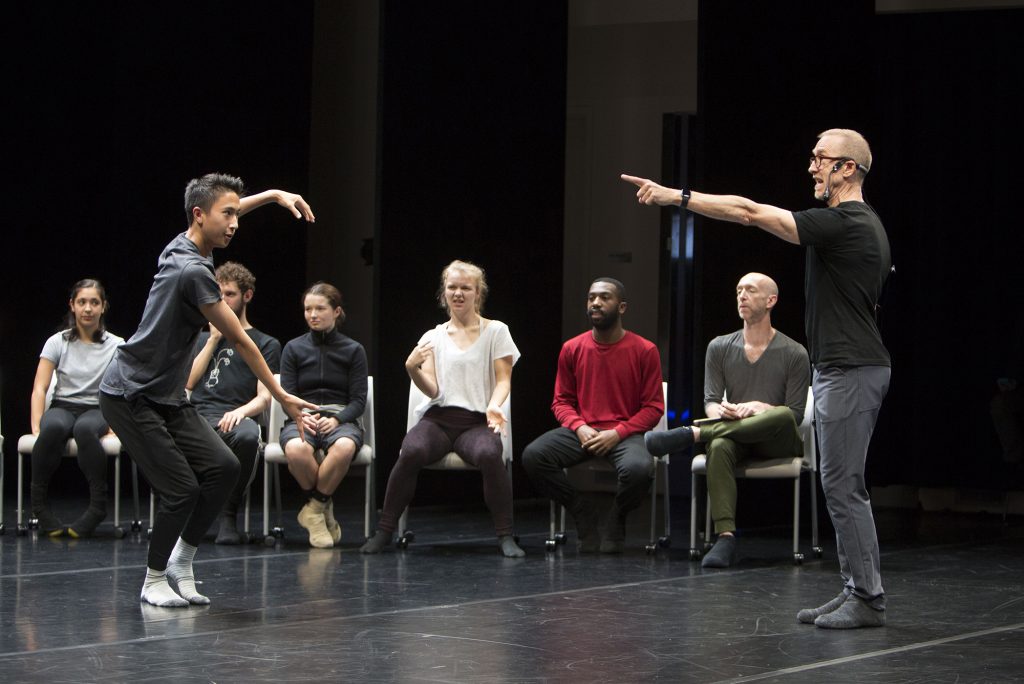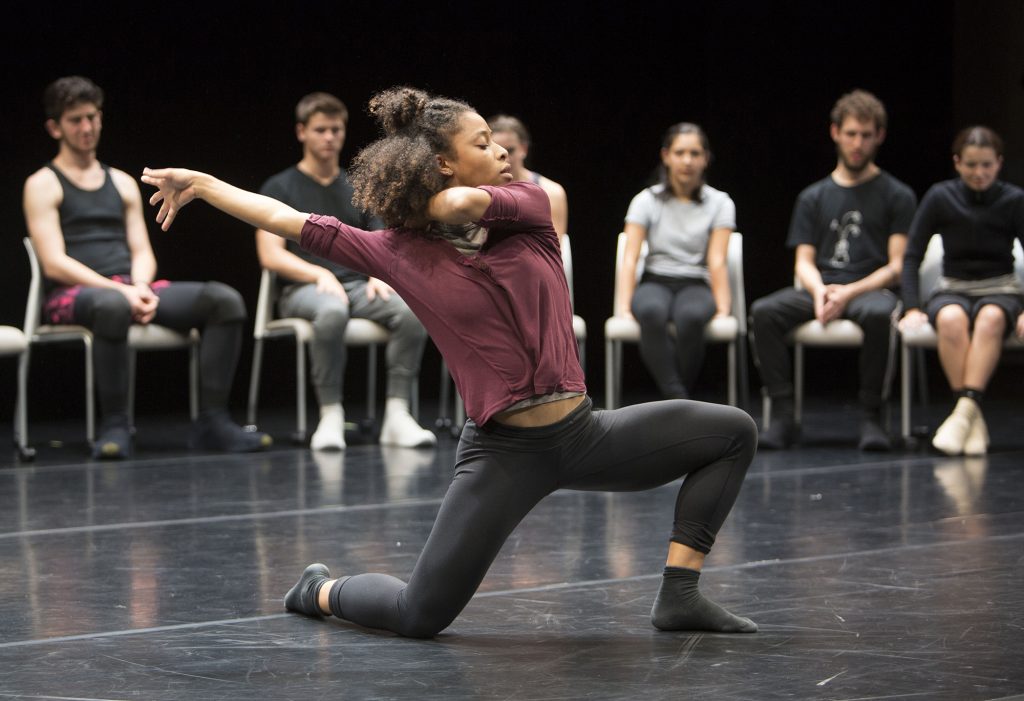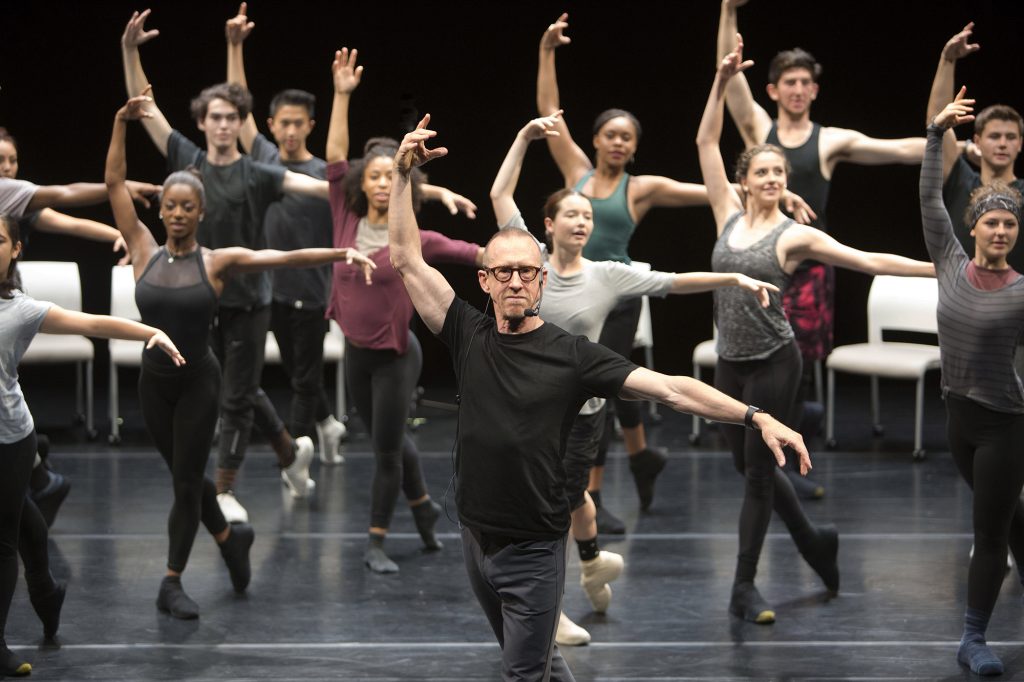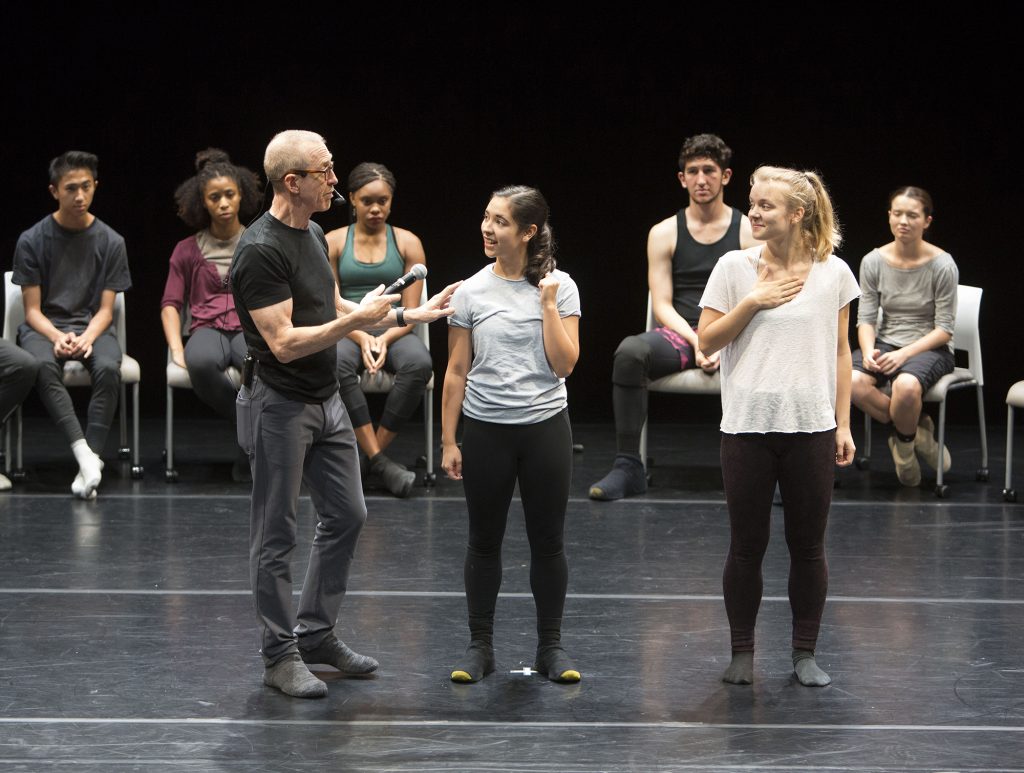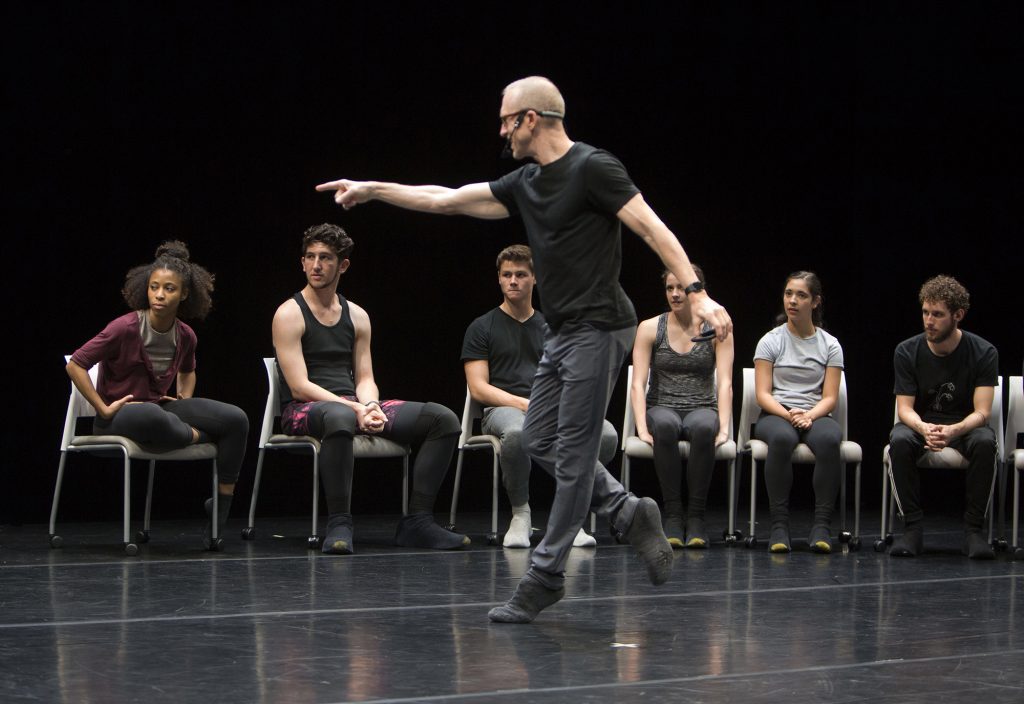Focus Forsythe presents a live deconstruction of ballet
October 5, 2016
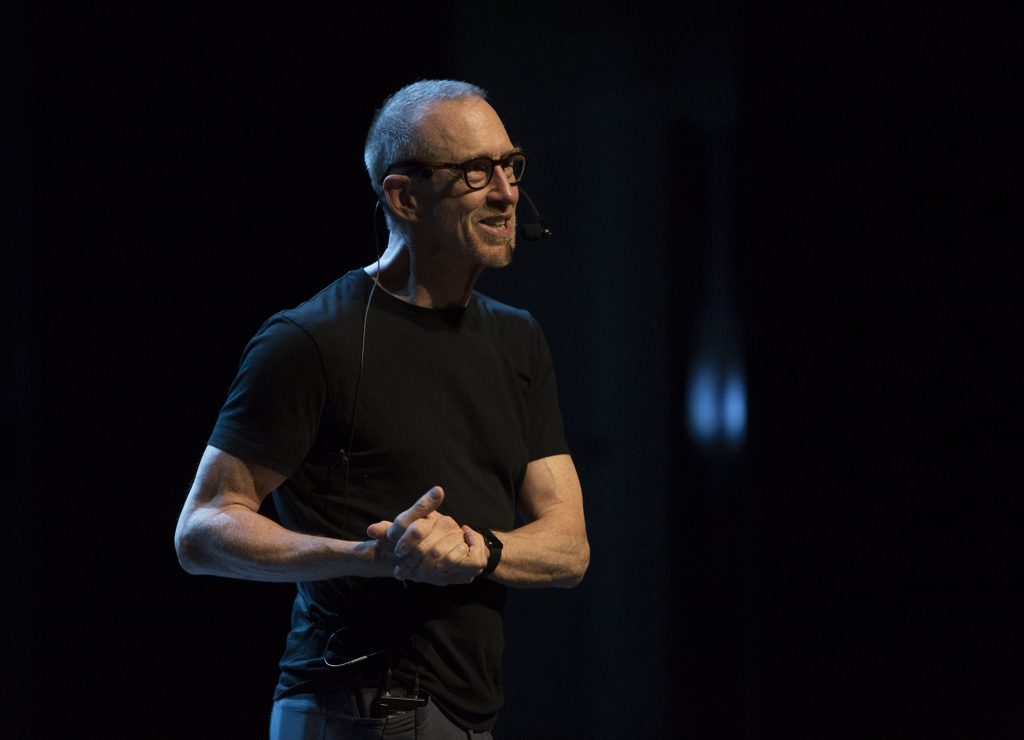
William Forsythe at "Focus Forsythe: The Choreographer's Process" | Photo by Rose Eichenbaum
Fall for Forsythe, a month-long celebration of world-renowned choreographer and USC Kaufman faculty member William Forsythe, began Sep. 29 with the event Focus Forsythe: The Choreographer’s Process. Presented by USC Visions and Voices, Focus Forsythe became a landmark in the history of the school, as the first show to be presented in the Glorya Kaufman International Dance Center’s Performance Studio.
In four sessions over two days, a cast of 21 USC Kaufman BFA students joined Forsythe on stage in a presentation characterized by masterful improvisation. Christopher Roman, who has collaborated with Forsythe for decades, assisted the staging, in which each dancer talked about the transformation of ballet and illustrated Forsythe’s instructions with his or her own approach according to individual skill set. The demonstrations, which included explorations with speed changes, group and individual performances, and other styles of dance, evidenced the hybridity of Forsythe’s style.
“We recognize the value of classical ballet training,” said Forsythe. “But we don’t see why it can’t continue developing. There’s no reason why its history has to stop in the past.”
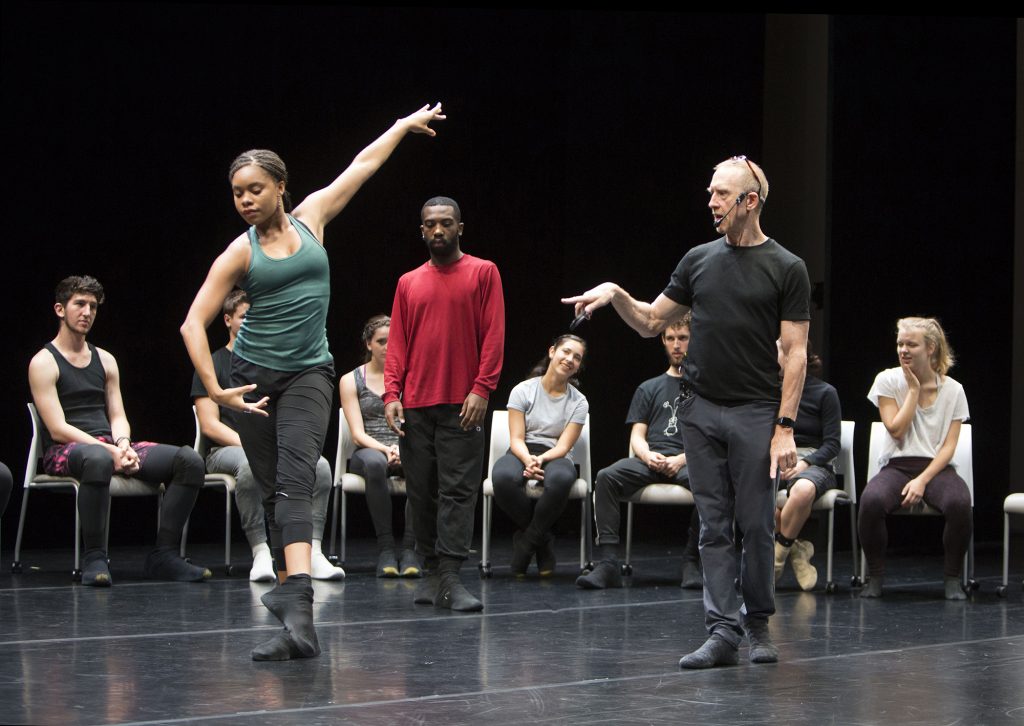
William Forsythe and BFA freshman Ausia Jones in “Focus Forsythe: The Choreographer’s Process” | Photo by Rose Eichenbaum
Deconstructing ballet
With a vibrant mix of discussion and dance demonstration, Focus Forsythe was a chance to experience how the core elements of ballet can adapt into alternative forms. Each student emphasized the role of different body parts in dance: while one dancer demonstrated the dynamics of the feet within a movement, another zeroed in on the flexibility of the hips while others performed counterpoint, focusing on geometry and balance. The experiments included variations modified with aspects of house, hip-hop and classical music, along with many others.
“I didn’t know what to expect,” said audience member Robbin Shahani. “I thought we were going to see the traditional work in progress presentation, but now I know that Forsythe’s work is exploratory and intellectual.”
Without structured choreography, students were challenged to illustrate the discussion through improvisation, which, as Forsythe puts it, is “real-time composition.” The students’ individual interpretations of Forsythe’s concepts, in addition to the unplanned selection of divergent beats, provided a dynamic experience for the audience.
By reorienting the structural elements of ballet, Focus Forsythe displayed the thought and research behind the choreographer’s work.
“I used to think ballet was too elegant, slow and a little boring,” said business student Ilyas Basoz, who takes a ballroom dance course at USC Kaufman. “But it was fascinating to see it applied to other styles and to understand the elements that come to play when developing a choreography.”
This event is part of Fall for Forsythe, a monthlong celebration of the work of choreographer William Forsythe in Los Angeles. Other Fall for Forsythe events include:
Focus Forsythe: The Choreographer’s Process | Sept. 29-30
Futures in Motion | Oct. 14, 2016
Forsythe Designed: A Costume Exhibition | Oct. 7-19, 21-23
Site-Specific Forsythe at LACMA: Acquisition, Stellentstellen | Oct. 15-16
Celebrate Forsythe | Oct. 21-23
